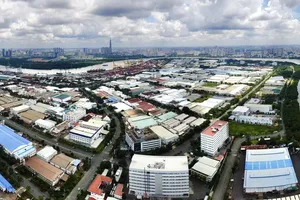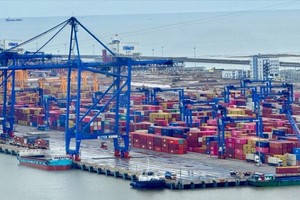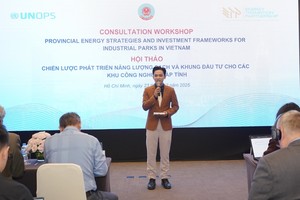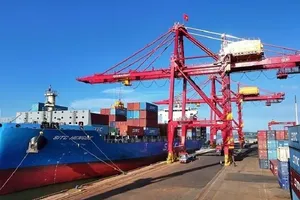The textile and garment industry has become a key economic sector in Vietnam, as it has a sustainable growth and a focus on an ongoing investment in both labor and technology.

Though the global economy has faced many difficulties during the past two years, the export of Vietnamese textile and garment products has sustained growth.
While most of the countries exporting textile and garment products have seen a decrease in exports, Vietnam has retained an increase.
The textile and garment export value exceeded the target of US$11.2 billion in 2010. In the context of new changes in the global economy, the sector has set a moderate target of US$12.5-13 billion for this year.
To achieve the 2011 target, local enterprises have boost production and exports since early this year. The export turnover is estimated to reach an average of US$1 billion per month. The export value hit a record high of nearly US$1.5 in May.
In the first five months of the year, Vietnam exported textile and garment products worth US$5.1 billion, a year-on-year rise of approximately 36 percent.
After dizzying hikes in fabric prices, prices of cotton and polyester fabric have gone down in May. This has resulted in a reduction in clothing prices. Therefore, apparel companies expect more orders from importers due to the price decrease.
Japanese companies continue to import clothes from Vietnam, in spite of the recent tsunami tragedy, as they have been for the last two and a half years. The export of protection uniforms to Japan has even soared.
At a meeting with Vietnamese textile and apparel companies in early May, Fumio Koyama from the Japan International Cooperation Agency (JICA) said Japanese investors planned to move 30 percent of their textile and garment factories from China to other countries in the next five years, with Vietnam as a favorite destination.
Moving factories from China to Vietnam will enable companies to benefit from the tax exemption regulated in the Vietnam-Japan Economic Partnership Agreement.
Pham Xuan Hong, general director of Saigon 3 Garment Joint Stock Company, which has exported 50 percent of its output to Japan, said Uniqlo - a Japanese fashion retail group and Saigon 3 Company’s long-term partner – has asked his company to gradually increase the quantity of clothes sold to Uniqlo and double the quantity by 2015 compared to now.
Besides targeting the regular importers in the US, EU and Japan, Vietnamese textile and garment products are making headway with Russian importers.
International economists said textile and garment production would move from Eastern European countries to Asian countries in 3-4 years. China is presently meeting 70 percent of the clothing demand of the world but is now reducing production.
Economists think this is a good time for Indian, Bangladeshi, Pakistani, Vietnamese and Cambodian clothing manufacturers to expand production and exports.
Taking care of labor
Vietnamese enterprises have now no need to look for importers but they are concerned about worker turnover.
Le Dong Trieu, general director of Gia Dinh Textile and Garment Corporation, said previously enterprises only focused on business growth but now they must focus on sustainable development.
They have agreed to cut profits to raise salaries for their staff and workers, he added.
In addition, they are investing in better technology and management to increase labor productivity.
Saigon Garment Production and Trading JS Company (Garmex) said thanks to good management, productivity of a worker has hiked by US$15 per day this year from US$11 per day last year.
The average monthly salary of a worker of Gia Dinh Corporation is currently VND4 million, while it was VND3.2 million in 2010.
The figure is VND4.5-5.5 million for workers of Saigon 3, Garmex and Legamex companies.
To maintain sustainable growth in textile and garment industry, enterprises are now taking good care of their workers and ensure them a stable income.
























